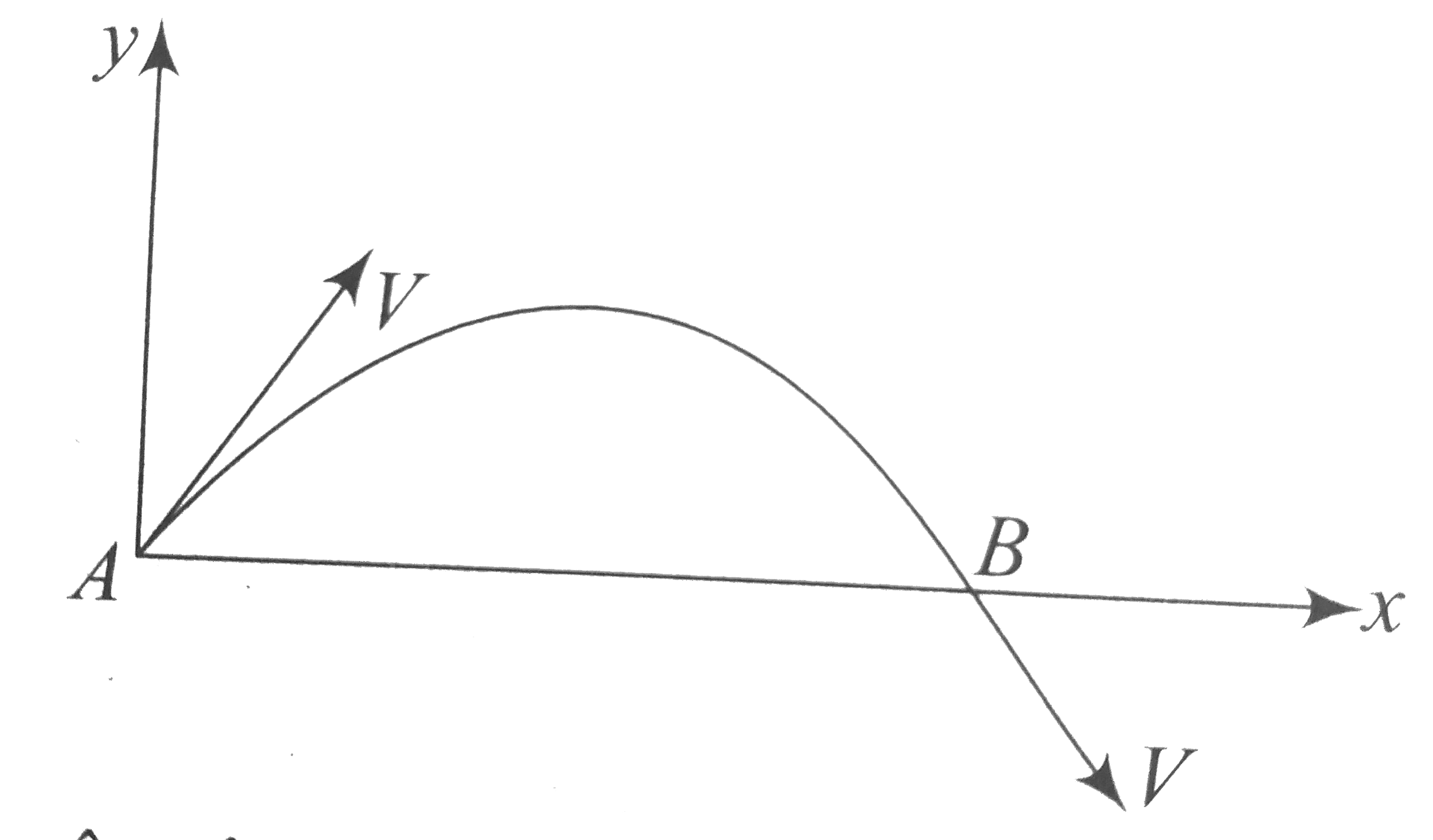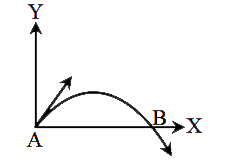The velocity of a projectile at the initial point A is (2ˆi+3ˆj)ms−1. Its velocity (in ms−1) at point B is

2ˆi−3ˆj
−2ˆi+3ˆj
2ˆi−3ˆj
2ˆi+3ˆj
The correct Answer is:C
From the question's figure, the X-component remain unchanged, while the Y-component is reverse. Then, the velocity at point B is (2ˆi−3ˆj)ms−1.
Topper's Solved these Questions
- BOOK - DC PANDEY ENGLISHCHAPTER - MOTIONEXERCISE - C. Medical entrances gallery1videos
MOTION
- BOOK - DC PANDEY ENGLISHCHAPTER - MEASUREMENT AND ERRORSEXERCISE - Subjective19videos
MEASUREMENT AND ERRORS
- BOOK - DC PANDEY ENGLISHCHAPTER - MOTION IN A PLANEEXERCISE - (C )Medical entrances gallery32videos
MOTION IN A PLANE
Similar Questions
Knowledge Check
- Question 1 - Select One
A projectile is thrown with an initial velocity of (aˆi+bˆj)ms−1. If the range of the projectile is twice the maximum height reached by it, then
Ab=a2Bb=aCb=2aDb=4a
Assertion At height 20 m from ground , velocity of a projectile is v=(20ˆi+10ˆj)ms−1. Here, ˆi is horizontal and ˆj is vertical. Then, the particle is at the same height after 4s.
Reason Maximum height of particle from ground is 40m (take, g=10ms−2)View SolutionA projectile is thrown with an initial velocity of (aˆi+bˆj)ms−1. If the range of the projectile is twice the maximum height reached by it, then
View SolutionA projectile is thrown with an initial velocity of (aˆi+ˆj)ms−1. If the range of the projectile is twice the maximum height reached by it, then
View SolutionThe velocity of projection of oblique projectile is (6ˆi+8ˆj)ms−1 The horizontal range of the projectile is
View SolutionA body of mass 0.8 kg has intial velocity (3ˆi−4ˆj)ms−1 and final velocity (−6ˆj+2ˆk)ms−1. Find change in kinetic energy of the body?
View SolutionVelocity of sound in air is 332 ms−1. Its velocity in vacuum will be
View SolutionA particle's velocity changes from (2ˆI+3ˆj)ms−1 in to (3ˆi−2ˆj)ms−1 in 2s. Its average acceleration in ms−2 is
View Solution



